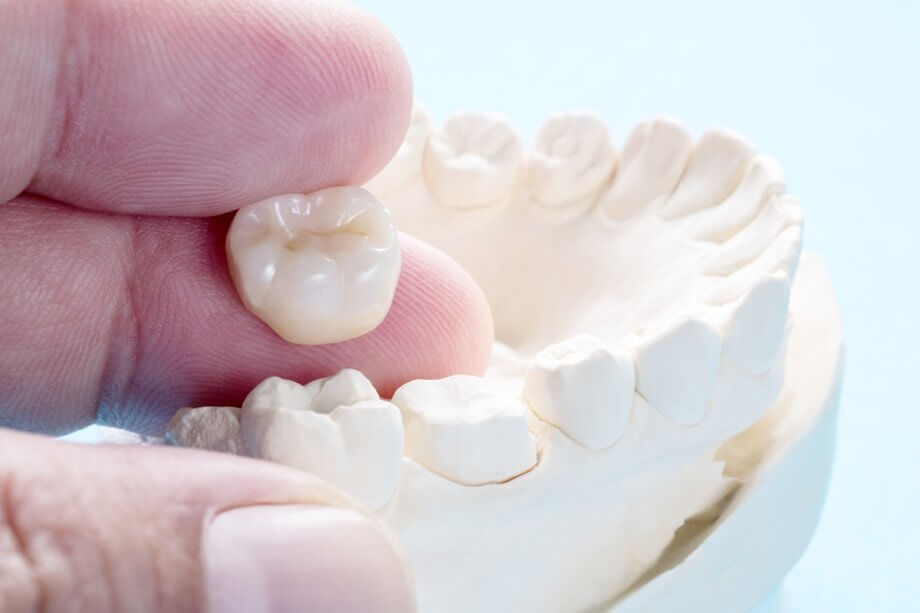Dental crowns are a restorative solution for teeth that are significantly damaged or decayed. When there isn’t enough natural tooth enamel remaining for a filling, a crown can be placed over the tooth. A crown can often save the tooth, allowing the natural roots to stay in place to support the crown.
What is a Dental Crown?
A dental crown is a tooth-shaped cap placed over the damaged tooth. The existing enamel must be reduced to make room for the crown. The crown is permanently cemented into place over the remaining tooth material, protecting the root of the tooth. A crown functions like a natural tooth, allowing you to chew effectively. It also looks like a natural tooth, providing you with a natural looking smile.
Dental Crown Materials
Crowns can be made of a variety of materials:
- Ceramic. Porcelain is a specific type of ceramic used in dental prosthetics because it closely resembles natural tooth enamel in texture and sheen. It is also strong enough to withstand the force of biting and chewing.
- Porcelain fused to metal. Porcelain fused to metal is stronger than porcelain alone, but the metal edge is sometimes visible, making it more suitable for a back tooth than a front tooth.
- Gold alloys. Gold alloy is often used in back teeth for the strength it offers when chewing. Some patients request gold crowns for front teeth if they want to achieve a certain look.
What Type of Crown Do I Need?
The type of crown that is best for your needs depends primarily on the location of the tooth. Ceramic/porcelain crowns are most often used on front teeth because they look very natural. The newer Ceramic and Zirconia crowns are also strong enough to be used on molars. Gold alloys can be used on back molars because they are strong enough to withstand the chewing force without wearing down too quickly.
What is the Process for Getting a Crown?
The process for getting a dental crown occurs in the following steps:
- Impressions. Digital images called impressions are taken of the tooth and mouth that are used to create the crown.
- Preparing the tooth. The tooth is prepared to receive the crown. This involves reducing the existing enamel to make room for the crown. It may also include a root canal if needed.
- Impressions. More impressions are taken of the prepared tooth that are used to create a crown that will fit the tooth.
- Placing the temporary crown. You will receive a temporary crown that you’ll wear for a few weeks while your permanent crown is created in a dental lab.
- Placing the crown. Once the permanent crown is shipped back to our office we will schedule an appointment to have your crown fitted. If it fits properly it will be permanently cemented into place. If not, it may need to go back to the lab for adjustments.
Can You Get a Crown in One Day?
We offer CEREC Same Day Crowns that can be placed in a single appointment. The process for getting a same day crown is slightly different:
- Impressions. Digital impressions are made of the tooth.
- Preparing the tooth. The tooth is prepared to receive the crown.
- Impressions. Digital impressions are made of the prepared tooth.
- Creating the crown. The crown is created with advanced technology right here in our office.
- Placing the crown. If the crown fits it is placed the same day. If not, it is immediately adjusted and refitted. Once the crown fits properly it is permanently cemented into place.
Emerson Dental Provides Dental Crowns
At Emerson Dental we provide crowns of all types and materials, including CEREC Same Day Crowns. After an evaluation and consultation we can recommend the best type of crown for your needs.
Contact us at one of our two convenient locations to learn more and schedule an appointment.

